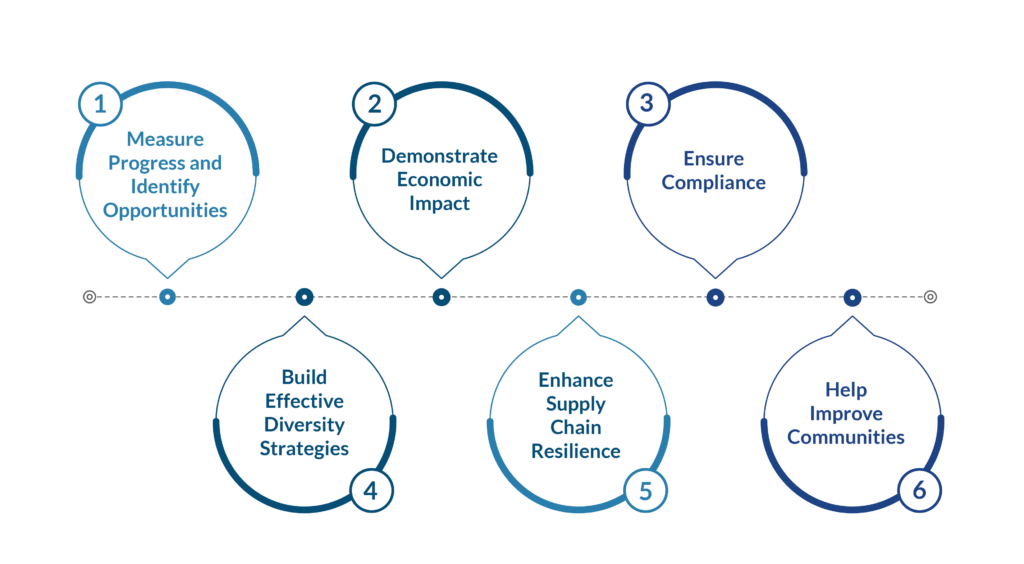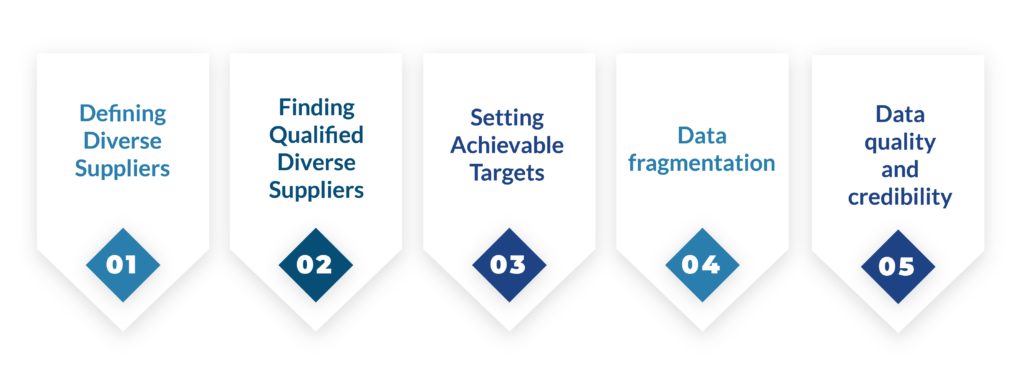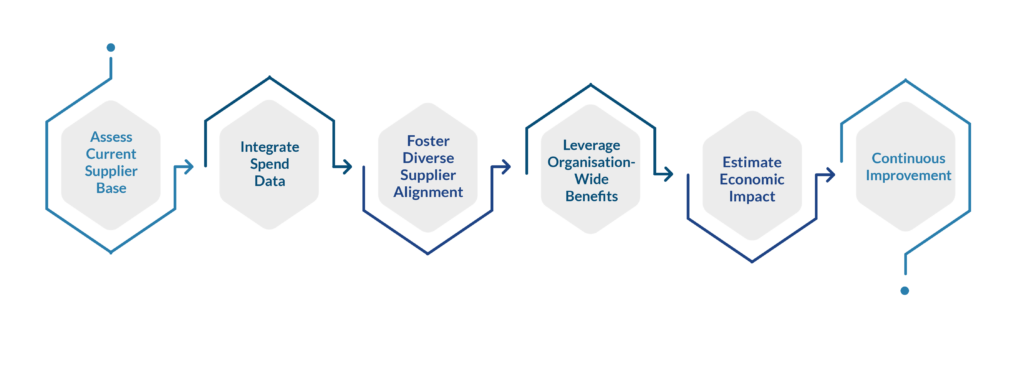Introduction
Nowadays, every business needs a diverse supply base to be successful. A diverse supply base creates more value, strengthens the supply chain, and positively affects communities. Working with these businesses brings innovation, better risk management, and empowerment to underrepresented groups.
However, spending a lot of money on diverse suppliers is not enough. Companies must pay close attention to their supplier diversity spending to benefit from these suppliers. Transparent cost data can measure progress towards diversity goals, show the economic impact on communities, and ensure compliance with diversity legislation. If diversity costs are not met regarding these underlying issues, the efforts of the various offers will remain disjointed and will not reach their full potential.
Why Tracking Supplier Diversity Spend Matters

1. Measure Progress & Identify Opportunities
Tangible spend data enables quantifying achievements towards diversity goals, providing granular visibility to analyse spend by category, geography, certification type, etc., and pinpointing areas needing more focus for improvement.
2. Demonstrate Economic Impact
Precise spending figures showcase contributions to diverse communities, empower underrepresented entrepreneurs to create jobs, drive innovation, and quantify this impact, positioning organisations as leaders in economic inclusion.
3. Ensure Compliance
It is essential to meet all relevant diversity regulations and requirements, especially in industries like government and construction that face strict diversity benchmarks, to avoid penalties, loss of business, and reputational damage from non-compliance.
4. Build Effective Diversity Strategies
Detailed spend data provides insights for more strategic sourcing, as analytics uncover new diverse suppliers for sourcing needs and identify capability gaps to address via supplier development.
5. Enhance Supply Chain Resilience
Visibility into diverse spending enables better risk management. A diverse supply base mitigates disruptions and overreliance on single sources, ultimately improving overall supply chain agility and resilience.
6. Help Improve Communities
Supporting disadvantaged, minority-owned businesses drives community growth as economic empowerment effects trickle outwards from the businesses.
Common Challenges in Tracking Diversity Spending in the UK

Tracking various expenditures can be complicated, and UK businesses encounter several problems. There are some of the most common challenges:
1. Defining diverse suppliers
Organisations must define diverse suppliers. These may include businesses owned and operated by ethnic minorities, women, veterans, or those located in economically deprived areas. Failure to establish clear definitions can make tracking and measuring performance difficult.
2. Finding qualified diverse suppliers
It may be difficult to find and source well-trained providers. The Minority Supplier Development UK (MSDUK), the Federation of Small Businesses (FSB), and local authority offices are all potential sources of diverse suppliers.
3. Setting achievable targets
Although cost savings remain key, companies must also set attainable goals for multiple spending. Having clear goals helps motivate procurement teams to actively seek out and engage with diverse suppliers.
4. Data fragmentation
Supplier Diversity spending information is scattered across numerous systems and business units within many companies, making it difficult to collect and analyse at a level. Effective systems must centralise this information through systematic approaches to track it effectively.
5. Data quality and credibility
Data first-rate and credibility: Inadequate spend categorisation and supplier certification validation methods can undermine supplier diversity spend data quality and credibility. Clear taxonomies and robust verification mechanisms are necessary for reliable data.
By addressing those challenges proactively, organisations within the UK can establish robust supplier diversity programs and reap the advantages of a diverse and inclusive supply chain.
Manual Practices for Diversity Spend Tracking

Here are some time-consuming practices for diverse spend tracking which people have been following:
Assess Current Supplier Base
List all current suppliers and identify their diversity certifications, categories of products/services they provide, and contributions to organisational spending. This will help you understand existing diversity levels and potential opportunities.
Integrate Spend Data
Introduce finance/ERP system procurement spend data to know how funds are allocated among suppliers of different kinds and a single race. Such understanding is critical in decision-making and goal-setting.
Foster Diverse Supplier Alignment
Improve internal stakeholder alignment on diversity goals, give training, engage suppliers through portals, do regular assessments, and simplify compliance and reporting processes.
Leverage Organisation-Wide Benefits
Use supplier diversity to widen the talent pool, include several suppliers in various aspects and create relationships that affirm the brand’s values of inclusiveness.
Estimate Economic Impact
Apply comprehensive analyses to evaluate the positive economic implications of inclusive supply chain practices and intentionally diversified expenditures on products and services.
Continuous Improvement
Regularly evaluate and improve diverse spending-tracking processes to meet emerging organisational requirements and industry standards.
Calculate Your Supplier Diversity Spend in less than 10 minutes with DataGardener
DataGardener’s business intelligence platform provides UK companies with comprehensive regional supplier data. Our robust analytics capabilities allow you to centralise, categorise and enrich your procurement data from disparate sources.
This empowers you to analyse your diverse spending at a granular level—by supplier category, subcategory, location, and more. DataGardener’s insights enable you to accurately benchmark your diverse supplier engagement, set achievable diversity goals aligned with your broader procurement strategy, and prioritise initiatives that drive meaningful supplier diversity progress.
With our user-friendly dashboards, you gain visibility into your diverse spending metrics, ensuring you hit targets and unlock the maximum value from a diverse supply base.

Conclusion
In conclusion, tracking supplier diversity spend is a strategic move that propels businesses forward. By embracing diversity in the supply chain, companies can enhance innovation, strengthen their market position, and contribute positively to society. While there are challenges, the benefits outweigh the hurdles. With platforms like DataGardener, the process becomes simpler, allowing businesses to assess their diversity spend and make informed decisions aligned with their values and goals. Ultimately, a commitment to supplier diversity is a commitment to a more dynamic, resilient, and inclusive future for all.
